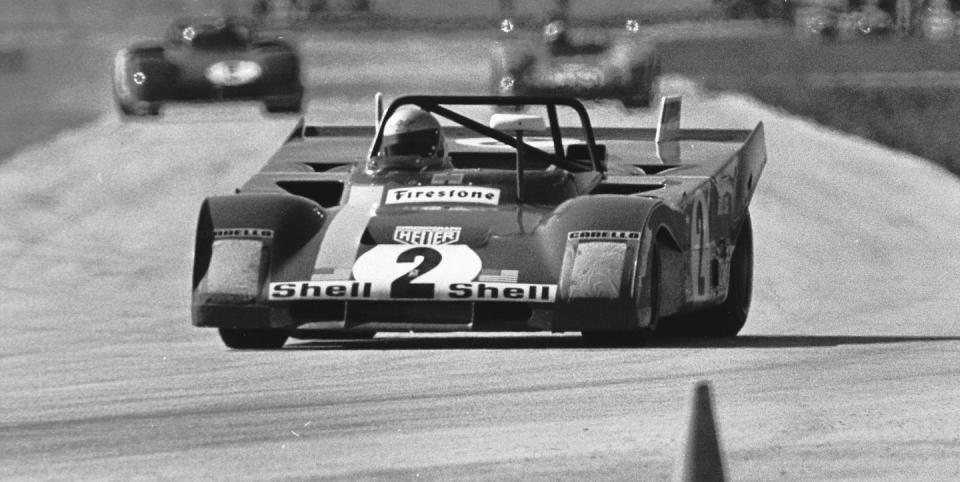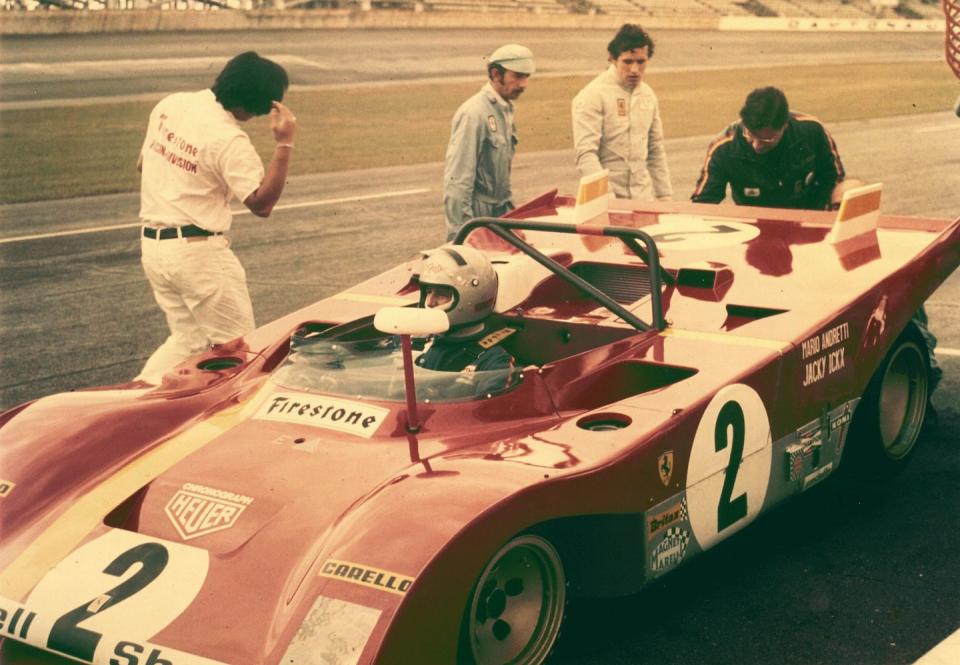How Mario Andretti, Jacky Ickx Conquered All 6 Hours of the '24 Hours of Daytona' in 1972

To say Mario Andretti has done it all in motorsports is one of the bigger understatements of the past century.
After all, the 81-year-old Andretti won races and titles in IndyCar, including the Indianapolis 500; was a Formula 1 world champion; triumphed in the International Race of Champions; and also rattled off wins in NASCAR's Daytona 500, at Pikes Peak, and even in a non-championship drag race in 1967.
One of the oddest race wins of his storied career, however, came in 1972 on the road course at Daytona International Speedway. And this week, Andretti returns to that track 50 years after what would be his only Daytona 24-hour race win, though the race in 1972 was actually only six hours long.
More about that in a moment.
Bill France, founder of NASCAR and the Daytona Speedway, had been enamored with endurance racing since 1961. That year, he traveled to Europe and witnessed his first 24 Hours of Le Mans.
France wanted a 24-hour endurance race for his track. He also dreamed of crowds rivaling that of Le Mans for his race. That first endurance race at Daytona, sanctioned by the Sports Car Club of America, was held on the Daytona Speedway road course in 1962. But that first race, the Daytona Continental, was just three hours long. It would take until 1966 before the first 24-hour race was held there.

Six years later, in 1972, preseason drama interceded and instead of a full 24 hours, the race was scheduled for only six.
The FIA, the worldwide governing body of sports car racing, had changed the rules prior to the 1972 racing season, limiting engines to 3.0 liters, down from 5.0. According to reports, due to reliability concerns with the smaller engines, the FIA limited endurance races to six hours—except for Le Mans. The other road course in Florida—Sebring—fought back and was able to keep its 12-hour race.
Daytona didn’t put up a fight, so the 1972 race was only six hours long.
While reliability concerns were the public reason for shorter races, there was some controversy. In 1971, Ferrari had been fielding their 312P, a car that featured—you guessed it—a 3.0-liter V12. Whether it was fortuitous insight, or simply good luck, there was talk behind the scenes that Ferrari had been lobbying the FIA for the shorter endurance races. Whether this is true or not has never been proven.
Alfa Romeo also had a 3.0-liter car, powered by a V8. Porsche, however, withdrew from the series, since it only had the 908, with a 3.0-liter flat-six engine that was outdated. The FIA also raised the minimum weight for the class, which further handicapped the lightweight 908. That was the icing on the cake, and Porsche withdrew factory support, leaving only customer teams.
So, for 1972, Daytona scheduled support races on race-weekend Saturday and was left with a sole World Championship race on Sunday that ran for six hours only.
Of course, to the drivers, a race was a race, no matter how long (or short, in this case).
Andretti qualified the car on pole and took an early lead. But just as quickly as he took the top spot, the Ferrari’s engine lost a cylinder, and soon Andretti and co-driver Jacky Ickx found themselves falling farther behind. But they refused to give up.
“You know, it's only a Ferrari that could go the rest of the distance of 11 cylinders without seizing up,” Andretti said, looking back on that half-a-century-ago race. “I don't know how, but we just kept flat-out, just kept going. And especially on the straight-line speed, we were really suffering, but we were still competitive, and we were both driving like qualifying. Because we had nothing to lose.”

 Yahoo Autos
Yahoo Autos 